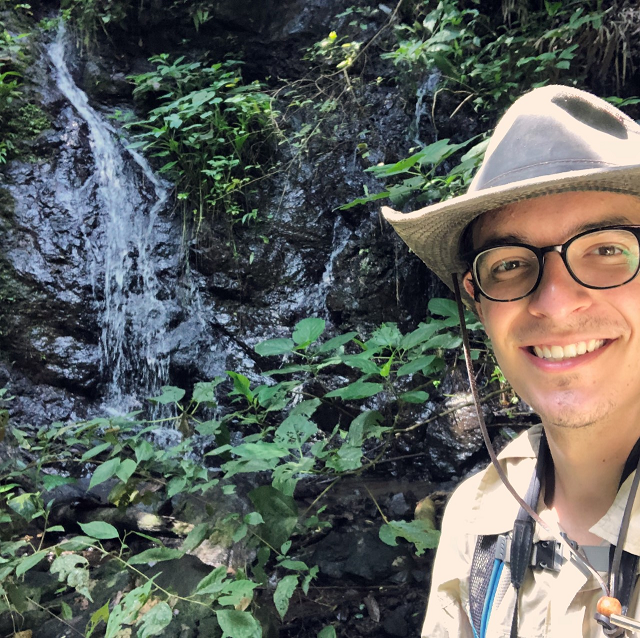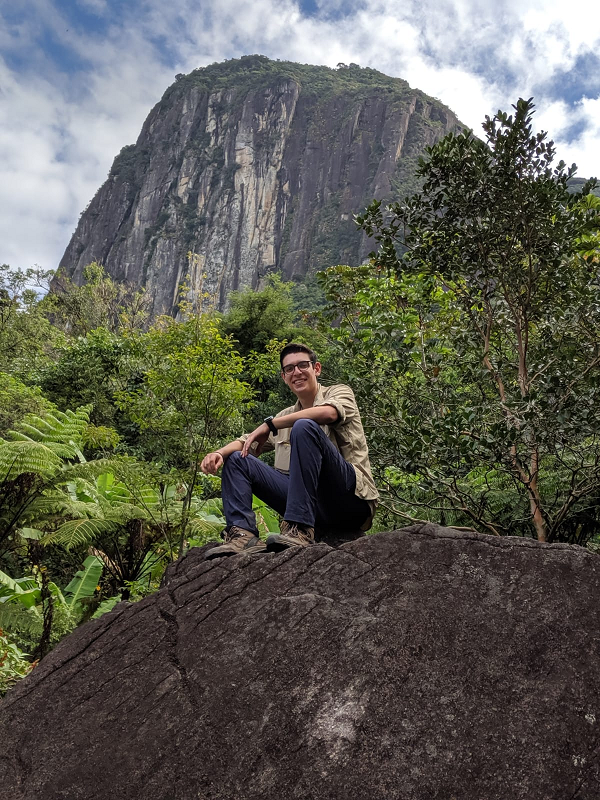SIT Ecuador alum works to save endangered species
A year after his study abroad, Ian Handler joined a summer conservation effort in South America
May 22nd, 2020 | SIT Study Abroad

As a Duke University student in fall 2018, Ian Handler studied abroad on SIT Ecuador: Comparative Ecology and Conservation. Last summer, he returned to Ecuador and other South American countries to work in conservation sciences. Following is a blog post he wrote about that experience. It is reprinted here with permission.
By Ian Handler
Last summer, I spent a month and a half in the field in South America, camera trapping for an organization called Saving Species (since restarted as Saving Nature). The goal of the organization is to work with reserves in various biodiversity hot spots globally to acquire land and create wildlife corridors. Corridors are connecting strips of land that, when forested, can connect isolated plots of forest. This sometimes means connecting multiple reserves or one fragmented reserve.
Much of the forest in South America is directly abutted by pasture or otherwise clear-cut land. This inhibits the interchange of individuals between forest fragments, excepting those species which thrive in disturbed forest. The consequential halt of gene flow severely limits the species richness of each fragment.
In fact, due to reasons including increased edge effects, limited resources, and limited genetic diversity, two medium-sized fragments of primary forest can support far fewer species than the large swath that would be created by combining the two. Therein lies the importance of the wildlife corridor which theoretically does just that.
The goal of the organization is to work with reserves in various biodiversity hot spots globally to acquire land and create wildlife corridors.
My work involved placing camera traps in the field at various reserves in Brazil (Atlantic coastal forest) and Ecuador (Chóco ecosystem), retrieving data from those cameras already in the field, and performing vegetation surveys at each camera site to attempt to quantify the forest structure in a way that could be compared. I was also part of some drone imaging which will allow for analysis of the reforestation progress in acquired land. I did this at the Reserva Poço das Antas and Reserva Ecológica de Guapiaçu in Brazil and at Jama-Coaque Ecological Reserve in Ecuador.
Much of the work involved planning at night using maps and GPS to determine the most valuable spots for cameras, followed by hiking out and determining on a micro level where the camera should be placed. There is a bit of a science to camera trap placement because you at once need to place the camera where wild animals will be passing, but ideally hidden from poachers, of which there are many.
Poachers often break or steal the cameras out of fear that the footage might be used to identify them. This means you need to find game trails that are unused by poachers and/or obscure the cameras on frequented trails while making sure not to obstruct the sight.

While in Brazil, I was able to partake in some field veterinary missions which included tattooing the highly endangered golden lion tamarin and radio collaring the prehensile tail porcupine and three toed sloth. In Ecuador, I did a bit of mist netting and bird release after banding.
There is a bit of a science to camera trap placement because you at once need to place the camera where wild animals will be passing, but ideally hidden from poachers, of which there are many.
The areas differed greatly in terms of primary vs secondary forest, various stages of reforestation, and zeroscapes. In some reserves, corridors were already functioning or being built, while in others, they are still in the land acquisition stage. Thus, the data collected from these cameras can be used in multiple ways.
For those preexisting corridors, this data is an annual assessment of reforestation and can determine what stage of recovery a forest must be in for certain species to use it or cross it. For areas where land has yet to be acquired, the within forest and forest edge data is very important to determine which species would be affected by corridor establishment.
Finally, the photos are also great for conservation fundraising because they show all of the lurking beauty within the jungle and inspire those who have never set foot in the jungle to feel deeply connected to it and its preservation.
